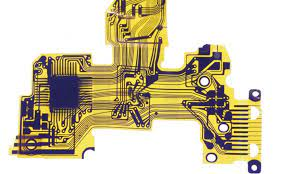In the realm of electronics manufacturing, flexibility is paramount. As technology continues to advance at a rapid pace, the demand for innovative solutions that can adapt to various design requirements and applications has never been greater. One such solution that has been gaining significant traction is the flexible printed circuit (FPC).
Understanding Flexible Printed Circuits
Flexible printed circuits, also known as flex circuits or FPCs, are incredibly versatile interconnection solutions used in electronic devices where space and weight restrictions are critical. Unlike traditional rigid PCBs (Printed Circuit Boards), FPCs are made from flexible materials, typically polyimide or polyester, which allow them to conform to the shape of the device they are installed in.
The Anatomy of FPCs
At the core of a flexible printed circuit is a thin, flexible substrate, usually made of polyimide, a high-temperature-resistant polymer. Copper traces are etched onto this substrate to create the conductive pathways for electrical signals. These traces can be designed in a variety of configurations to suit the specific needs of the application, whether it’s a simple single-layer circuit or a complex multi-layered design.
Advantages of Flexible Printed Circuits
- Space-saving: FPCs can be bent, twisted, and folded to fit into tight spaces within electronic devices, eliminating the need for bulky wire harnesses and connectors.
- Weight reduction: The lightweight nature of FPCs makes them ideal for applications where weight is a concern, such as in aerospace and automotive industries.
- Improved reliability: With fewer interconnect points compared to traditional wiring harnesses, FPCs offer increased reliability and reduced risk of failure due to loose connections or wire fatigue.
- Enhanced design flexibility: The ability to bend and flex allows designers to create innovative, compact product designs that would be impossible with rigid PCBs.
- Cost-effectiveness: While the initial manufacturing cost of FPCs may be higher than traditional PCBs, their ability to reduce assembly time and material costs often results in overall cost savings.
Applications of FPCs
The versatility of flexible printed circuits makes them suitable for a wide range of applications across various industries:
- Consumer Electronics: From smartphones and tablets to wearable devices and digital cameras, FPCs play a crucial role in enabling the sleek and compact designs consumers have come to expect.
- Automotive: FPCs are used in automotive applications for everything from airbag systems and infotainment systems to sensors and lighting controls, where space-saving and reliability are essential.
- Medical Devices: In the medical field, FPCs are used in devices such as pacemakers, defibrillators, and medical imaging equipment, where their flexibility and reliability are critical.
- Aerospace: In aerospace applications, FPCs are used in aircraft avionics, satellite systems, and other critical electronic systems where weight reduction and reliability are paramount.
Future Outlook
As the demand for smaller, lighter, and more reliable electronic devices continues to grow, the role of flexible printed circuits in electronics manufacturing is poised to expand further. Advances in materials science and manufacturing technologies are likely to drive improvements in FPC performance, enabling even more innovative and complex designs in the future.
In conclusion, flexible printed circuits represent a significant advancement in electronics manufacturing, offering a versatile solution for designers seeking to create smaller, lighter, and more reliable electronic devices. With their ability to bend, twist, and flex, FPCs are revolutionizing the way electronic products are designed and manufactured, paving the way for a new era of innovation in the electronics industry.





